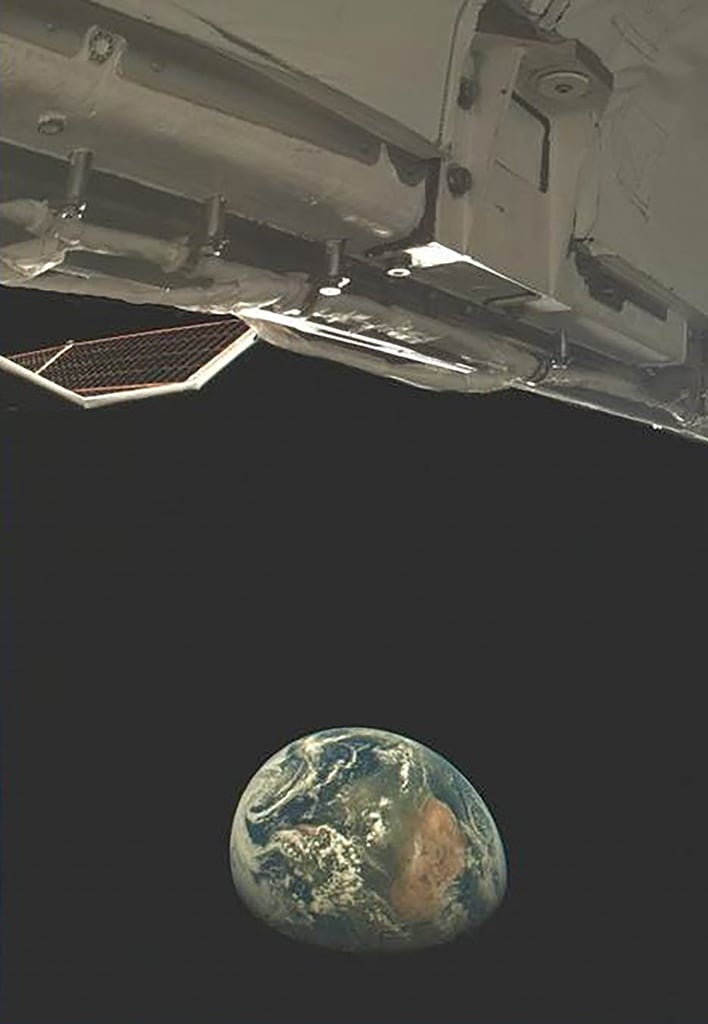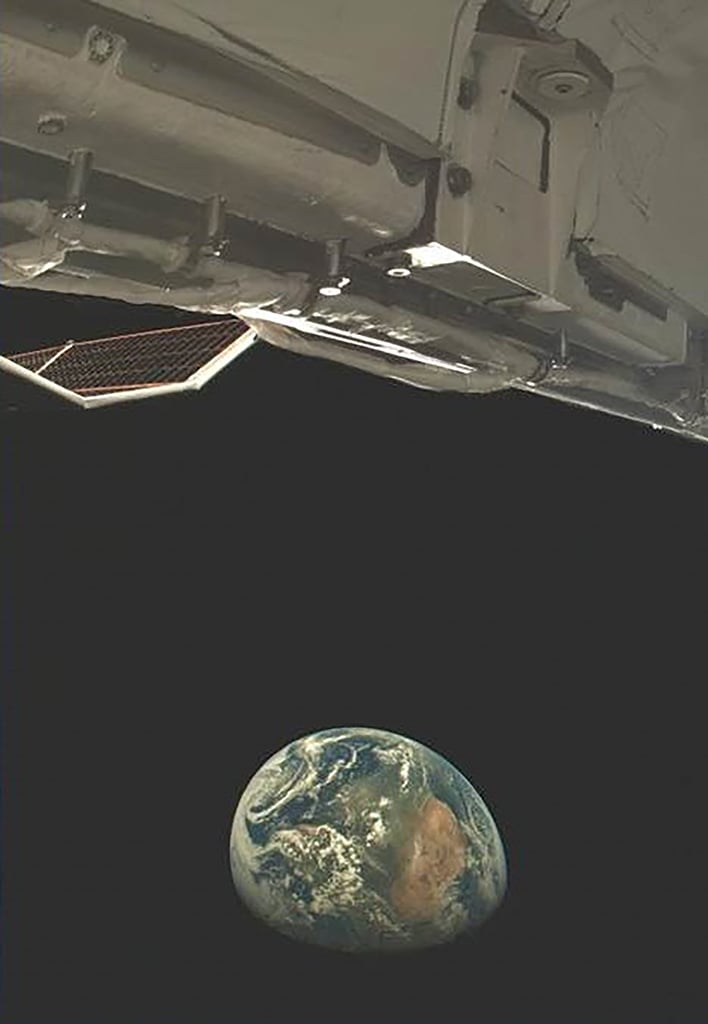
The Pentagon is investigating strategies to engage in future conflict in space, relying heavily on an enigmatic platform that has set a remarkable record for operational duration in the cosmos. The X-37B Orbital Test Vehicle—a 29-foot-long experimental spacecraft capable of autonomous reentry into Earth’s atmosphere—has become an essential asset for the U.S. Space Force as it plans for future military endeavors.
This real-world data collection platform is vital for understanding operations in an increasingly congested orbital environment filled with small satellites and debris from a growing array of both state-owned and commercial entities.
“Having a platform like the X-37B excites me,” remarked Chief of Space Operations Gen. Chance Saltzman during an exclusive interview with Aviation Week on January 31. As he navigates crucial decisions in the coming years, best equipping the Space Force is imperative for maintaining U.S. superiority in this contested arena.
- The Space Force is analyzing data from the spaceplane to guide the development of next-generation technologies.
- A newly developed automated system has identified millions of potential collision avoidance scenarios.
Throughout its initial six missions, the X-37B spent over 3,774 days orbiting the Earth. Currently, on its OTV-7 mission launched on December 28, 2023, it surpassed 400 days in orbit as of January 31. To put this into perspective, the space shuttle managed a total of 1,323 days in space from April 1981 to July 2011.
Constructed by Boeing, the X-37B is an evolution of NASA’s original X-37 program, which operated between 1999 and 2004. It later transitioned to DARPA before being handed over to the Air Force Rapid Capabilities Office (RCO) in 2010. The spacecraft is launched vertically atop a rocket but lands horizontally like a conventional airplane.
Space analysts have speculated about the breadth of the X-37B’s mission capabilities and technology, primarily because the onboard payload details remain largely undisclosed. The Air Force has always asserted that the vehicle’s purpose is to showcase reliable and reusable spacecraft technology and conduct experiments that can later be retrieved for analysis on Earth.
Aside from its reusability, the X-37B is more maneuverable and agile compared to most space vehicles, having completed its longest mission to date by orbiting for nearly 2.5 years before returning home.
The Space Force is collecting valuable data from experiments within the spacecraft and an associated service module that was introduced during its sixth mission.

Saltzman noted that the insights gained from these experiments will shape the Space Force’s approach across various mission areas and forthcoming satellite initiatives. “This enables me to utilize physics-based, real-world data as we strategize to create more resilient architectures,” he explained.
Since its inaugural mission in 2010, the U.S. military has maintained confidentiality regarding the X-37B’s trajectory, announcing its return to Earth only after landing.
However, in a shift from this practice, the Space Force revealed in October that the spaceplane would conduct an aerobraking maneuver for the first time during its ongoing mission, alongside radiation effect experiments and testing space domain awareness technologies in a highly elliptical orbit (HEO).
The X-37B was designed to utilize atmospheric drag to descend into low Earth orbit (LEO) long enough to safely dispose of its service module, subsequently continuing its testing and experimentation.
The OTV-7 mission marks the first time the X-37B is operating in HEO, rather than exclusively in LEO. Former Air Force Secretary Heather Wilson hinted at the craft’s capability to perform a “stretched egg” orbit, enabling it to maneuver unpredictably when nearing the atmosphere.
Such unpredictability would confound adversaries regarding its orbit re-entry points, much to Wilson’s satisfaction, as she shared at the 2019 Aspen Security Forum. “We know that drives them crazy, and I find that quite gratifying,” she said.
The transition to HEO has allowed the RCO and Space Force to assess the spaceplane’s performance in various orbital environments. The upper limit of LEO extends to approximately 2,000 km (1,240 mi.), while an elliptical HEO orbit has a perigree of about 1,000 km and an apogee exceeding 35,786 km.
Performing aerobraking maneuvers necessitated modifications to the spaceplane, particularly to enhance fault protection, autonomy, and collision avoidance capabilities. Ahead of the OTV-7 mission, Boeing developed an advanced collision avoidance system, according to Michelle Parker, company’s vice president for space mission systems.
As space traffic becomes denser, the importance of autonomy increases, Parker emphasized during her conversation with Aviation Week at Boeing’s satellite facilities in El Segundo, California, on February 3.
Throughout the current mission, the Space Force has identified around 1.7 million potential collision avoidance incidents, with Saltzman remarking, “When I refer to data, I’m not citing a handful of numbers on a spreadsheet.”
The aerobraking capability has allowed Saltzman to assess the efficacy of the Space Surveillance Network, an extensive global system composed of optical and radar sensors designed to detect, track, identify, and catalog all human-made objects in orbit. This experiment enables him to evaluate how well various sensors can locate the spaceplane in its newer orbit.
Gathering such real-world data on orbital maneuvers is vital for the Space Force to mitigate potential surprises from rival nations.
The China Aerospace Science and Technology Corp. has developed a similar reusable spaceplane, the Shenlong, which has reportedly conducted three missions performing rendezvous and proximity operations and deploying small satellites or objects into space.
China has kept a tight lid on information regarding the Shenlong, which observers believe is functionally comparable to the X-37B. Both spaceplanes launched just weeks apart in December 2023, with the Shenlong deorbiting in September, while the X-37B continues its mission.
The Space Force has pinpointed three primary focus areas for the future: space domain awareness, resilient on-orbit architectures, and responsible counterspace capabilities, Saltzman stated in December at the Space Force Association’s Spacepower Conference in Orlando, Florida.
During the interview, Saltzman clarified that there are no intentions to use the X-37B as a direct operational vehicle. Instead, its role will be to refine understanding of the capabilities and strategies of similar potential adversarial platforms and to create realistic training environments.
As the Space Force prepares for potential conflicts in space, possessing an experimental platform has become “even more consequential than it might have been when [space] was a relatively safe environment,” he remarked.
The X-37B will play a significant role as the Space Force establishes its newest field command within the next year. The Space Futures Command aims to help the service anticipate threats in space, engage in wargaming and training, and refine mission area planning.
Once formally established, the command will leverage insights from the X-37B’s activities in orbit in collaboration with the Air Force RCO, according to Saltzman.
“The RCO will reflect on the challenges identified by the Futures Command and explore technologies of interest, while assessing whether the X-37 can collect pertinent data to fill knowledge gaps they presently face,” he explained.
Though the Space Force opted not to disclose specifics on how X-37B data is shaping future spacecraft designs, Saltzman noted that these discussions are still in the early research and development stages. However, he anticipates that this data may aid in evaluating the feasibility of servicing satellites in orbit instead of deorbiting them for maintenance or complete platform renewals. “We have various paths open to us, but we need to evaluate their costs and applicability to respective missions,” he stated.
Saltzman refrained from commenting on the timeline for the spaceplane’s return to Earth or the commencement of its eighth mission. Historically, subsequent missions have launched within a year after a previous mission’s conclusion, though the latest mission had a 13-month gap before its launch.
Boeing has consistently enhanced the X-37B through ongoing upgrades, according to Parker. The spaceplane is now employing its second generation of batteries and third generation of solar panels, supplied by Boeing subsidiary Spectrolab.
“While it may appear visually unchanged, the internal components have been significantly upgraded, enabling continued long-term operation,” Parker indicated.
Such refinements have ensured the X-37B program remains cost-effective, as both Saltzman and Parker emphasized, while declining to disclose funding specifics.
Parker highlighted that, despite being a governmental platform, the capabilities of the X-37B could eventually be adapted for commercial applications, supporting initiatives like on-orbit refueling, experimentation, or debris collection.
“As the space sector grows, opportunities for utilizing returnable platforms will likely expand as well,” she stated.
A patent for the newly developed collision avoidance system is pending, and Boeing stated that this technology is not currently being integrated into other platforms.
In response to increasing competition from China and Russia, Space Force officials have aimed to communicate more transparently about their mission areas and capabilities. Saltzman noted that during his time as a Minuteman III launch officer and satellite operator for the National Reconnaissance Office, the concept of space as a warfighting domain was not acknowledged.
“The perspective was relatively static, with the objective being to launch satellites into orbit that would remain operational for an extended duration—if feasible,” he explained.
In October, the Space Force decided to disclose details of the X-37B’s aerobraking maneuvers, highlighting the importance of safe orbital maneuvers for successful spaceflight operations, according to Saltzman.
“We aimed to announce our plans in advance,” he expressed. “We want other nations to take note of our actions. Sharing this data is important.”
About the X-37B
Originally known as the Future-X Pathfinder, the X-37 program was initiated by NASA to explore over 40 technologies related to airframe design, propulsion, and operational efficiency, with a goal of reducing the cost of accessing space. This program ran from 1999 until September 2004, when oversight was handed over to DARPA. NASA had previously conducted low-speed and altitude tests from 1998 to 2001 using the X-40A—a smaller prototype of the X-37 developed by the Air Force Research Laboratory. Following this, DARPA performed multiple captive-carry and drop tests with the Boeing-built X-37A in 2005-06, which led to the announcement of the X-37B Orbital Test Vehicle program by the Air Force in November 2006.
The X-37B has successfully completed six missions since its initial launch on April 22, 2010, aboard a United Launch Alliance Atlas V 501 rocket from Cape Canaveral SFS. The current mission, OTV-7, was launched by a SpaceX Falcon Heavy rocket on December 28, 2023, and it reached the 400-day milestone in orbit as of January 31.
Editor’s Note: This article has been updated to reflect the correct orbital status regarding resumed testing and experimentation.









